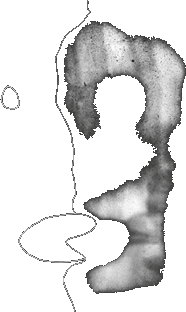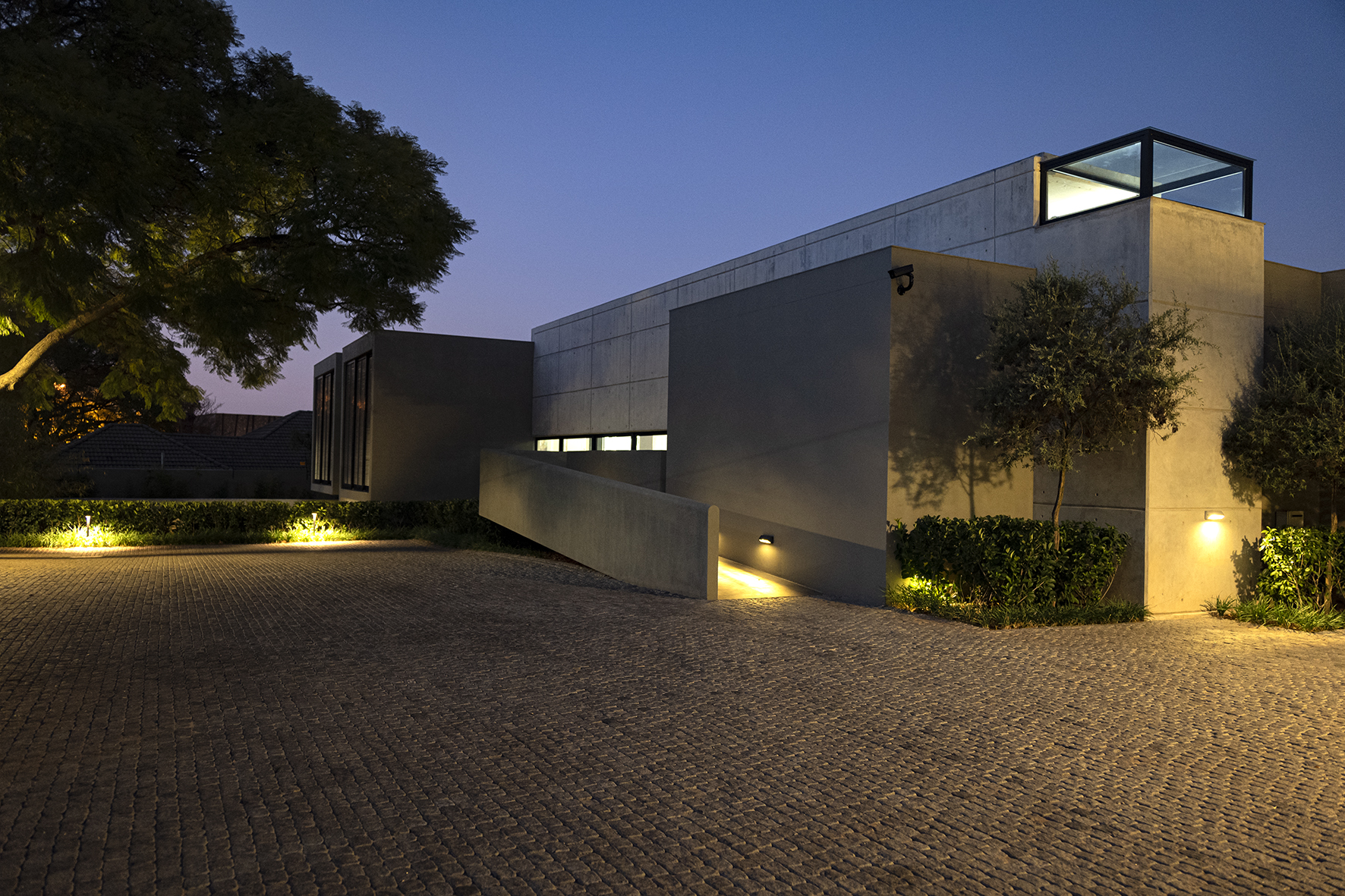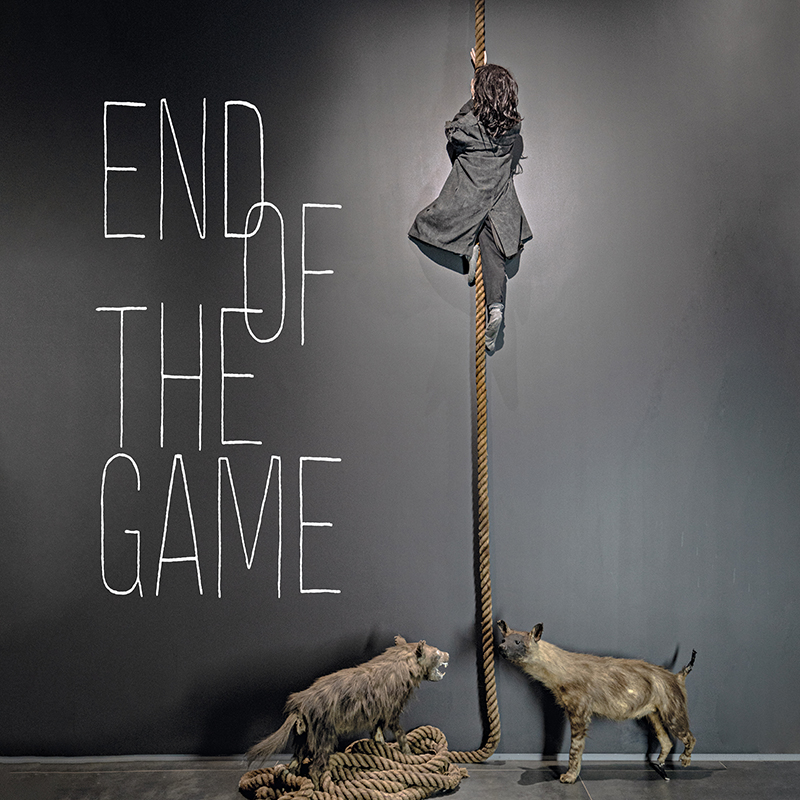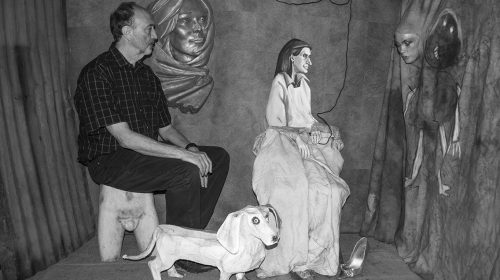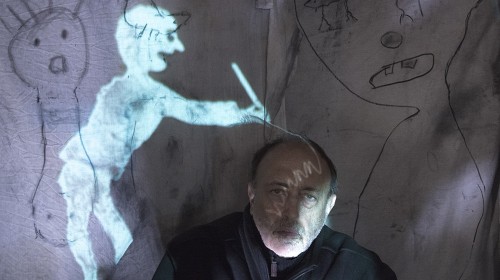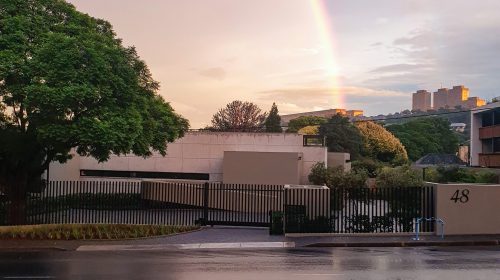
The Inside Out Centre for the Arts
The Inside Out Centre for the Arts is founded by the Roger Ballen Foundation and is located on 48 Jan Smuts Ave, Forest Town, Johannesburg. Its goal is to promote African photography and art through exhibitions and educational programmes. The Inside Out Centre officially opened in March 2023.
Visit the website: Inside Out Centre for the Arts
Contact Details:
+27 87 700 5998
Current & Upcoming Events
Exhibitions
The Uncanny Lens / La Lente Inquietante ROGER BALLEN – JOEL-PETER WITKIN, Castel Ivano, Trentino, Italy 16th March to 13th April 2024
The Uncanny Lens / La Lente Inquietante
ROGER BALLEN – JOEL-PETER WITKIN
Presents 60 photographic works by Roger Ballen and Joel-Peter Witkin
The first exhibition in Italy as part of an international tour to be held at the medieval setting of Castel Ivano, in Trentino, Italy
From 16th March to 13th April 2024
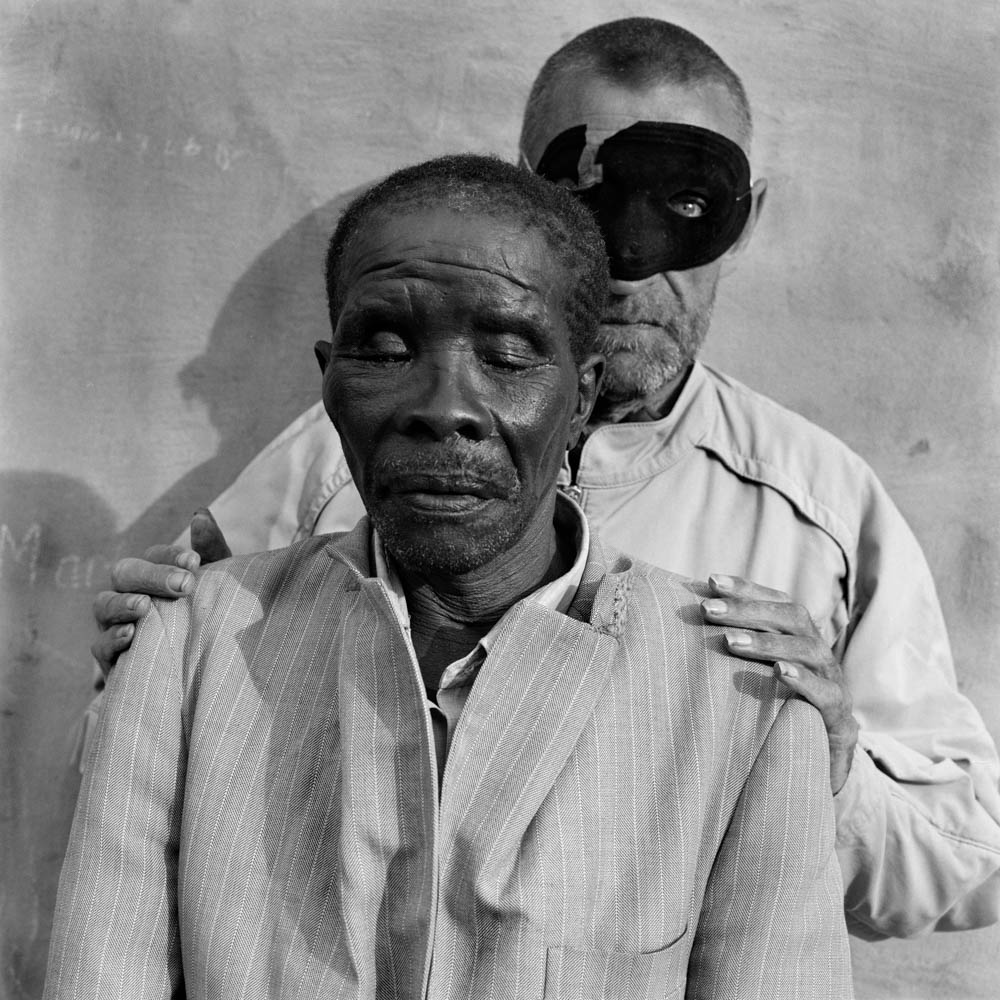
John Behind a Man called Mashillo, 2000
Roger Ballen
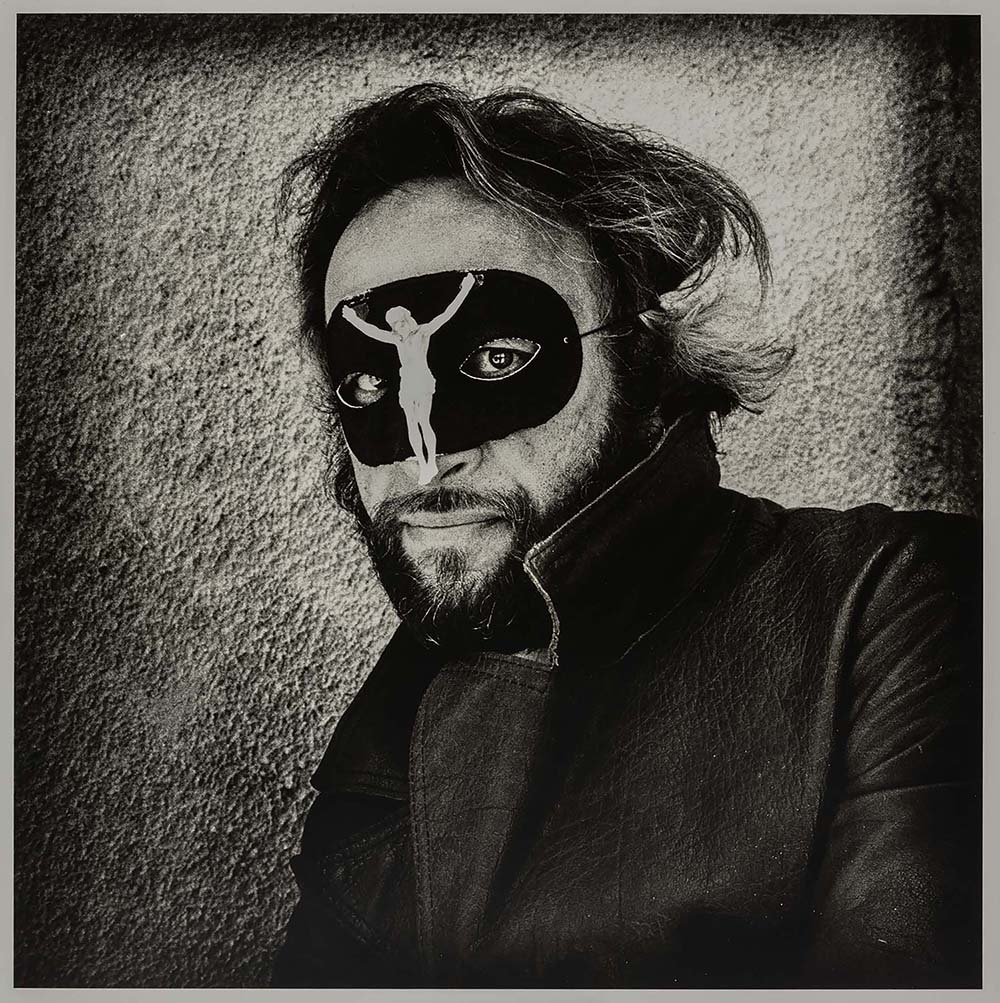
Portrait of Joel, New Mexico, 1984
Joel-Peter Witkin
INTRODUCTION:
The Uncanny Lens / La Lente Inquietante exhibition has been organised by the Chirone culture association under the artistic direction by Fulvio de Pellegrin and Paolo Dolzan, who assigned the curatorship of the exhibition to Fortunato d’Amico.
The exhibition catalogue, containing 30 black-and-white images each of both Roger Ballen and Joel-Peter Witkin, spanning over decades of their careers is published by Fallone Editore. The catalogue is supplemented by the critical contributions of various authors, including the philosophers Sergio Fabio Berardini and Alessio Caliandro, the poet Michelangelo Zizzi, and the critics Fiorenzo Degasperi and Mauro Zanchi.
BACKGROUND:
The Uncanny Lens / La Lente Inquietante is an exhibition aimed at showcasing the photographic works of two renowned artistic figures, Joel-Peter Witkin and Roger Ballen. Both artists are known for their distinctive and unconventional approaches to black-and-white photography, the human condition, the human psyche and the grotesque. The proposed exhibition seeks to encourage an exploration of the unconscious mind through photography. Further, by presenting a selection of these works side-by side, this exhibition seeks to offer a deepened and more nuanced appreciation for these artist’s contribution to Surrealism and to the history of photography.
The reference to the ‘uncanny’ in this exhibition is two-fold: it refers to the eerie quality of the works themselves, as well as to the remarkable and strange visual relationships between these two oeuvres.
This exhibition will consist of black-and-white photographs of each of the two artists spanning decades of their careers. The images from both Joel-Peter Witkin and Roger Ballen have both been said to engage with the ‘darker’ aspects of the human condition, the human psyche and the grotesque. The works have been described as ‘provocative’, ‘unsettling’ and ‘disturbing’. But it is in the juxtaposition of their photographs that we gain a clearer understanding of each artist’s unique style as well as a deepened appreciation of Surrealistic photography.
This project reveals a profound dialogue established over the years between the two artists. In the juxtaposition of their photographs, we gain a clearer understanding of their unique aesthetic through their stylistic and iconographic references to myth and fantasy.
Witkin’s still lifes often reference pre-existing Western masterpieces and include macabre corpses and body parts, fantastical elements, and religious and mythological imagery. His photographs are planned through sketches, and he uses multiple exposures, montages, and photogravure to imbue the scenes with a quality of the dreamlike, mystical and occult. In contrast, Ballen’s distinctive visual vocabulary incorporates the use of dilapidated or discarded items, found objects and taxidermy, human mannequins and actual body parts, graphic elements such as wires and art-brut drawings, toys and domestic animals (from birds to cats, to rats).
Despite each artist’s distinctive styles of expression, elements come together as surrealistic, absurd or uncanny mise-en-scenes that, in their formal harmony, venture into abstraction. Moreover, despite the geographical distance and the particular contexts of these artists (Witkin works mainly in New Mexico, USA and Ballen in Johannesburg, South Africa), one finds a striking similarity in the vocabulary of motifs and in the ways in which they are combined.
ARTISTS BIOGRAPHIES:
ROGER BALLEN:
Born in the US and based in Johannesburg, South Africa for over four decades, Roger Ballen is one of the most important photographers of his generation. He has published over 25 books and recently Thames and Hudson published his book Ballenesque, Roger Ballen – A Retrospective, a major book of his collected works. His photographs are collected by some of the most prominent museums in the world.
His oeuvre, which spans five decades, began with the documentary photography field but evolved into the creation of distinctive fictionalized realms that also integrate the mediums of film, installation, theatre, sculpture, painting and drawing. Ballen describes his works as “existential psychodramas” that touch the subconscious mind and evoke the underbelly of the human condition. They aim to break through the repressed thoughts and feelings by engaging him in themes of chaos and order, madness or unruly states of being, the human relationship to the animal world, life and death, universal archetypes of the psyche and experiences of otherness. Through his unique, complex visual language, and universal and profound themes, the artist has made a lasting contribution to the field of art. https://www.rogerballen.com/
Ballen has also been the creator of several acclaimed and exhibited short films that dovetail with his photographic series. Ballen was one of the artists that represented South African at the Venice Biennale Arte 2022.
He is also the founder and executive director of the Inside Out Centre for the Arts in Johannesburg, which opened to the public in March 2023. The Centre aims to promote an awareness of African related issues through exhibitions and educational programs. Its first show, entitled End of the Game, explores the decimation of wildlife in Africa both through historical artefacts and Ballen’s photographs and installations.
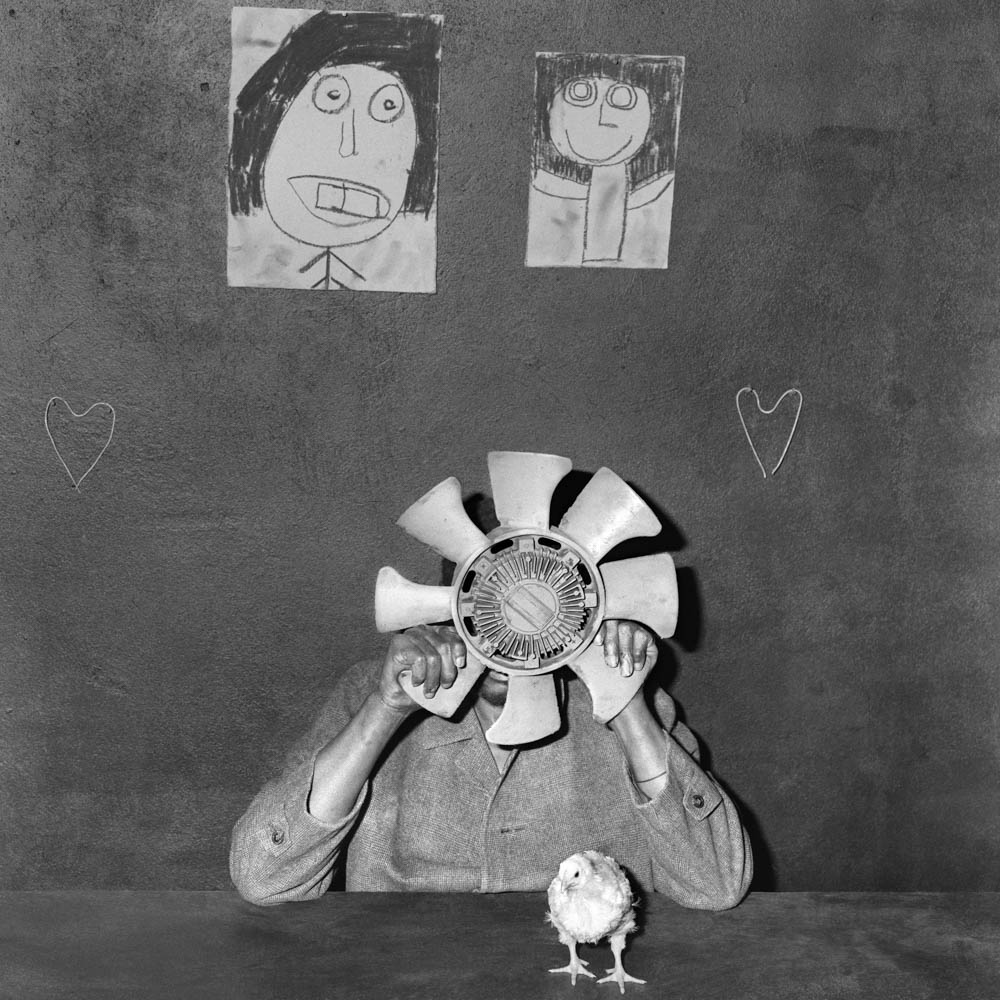 Bewildered, 2003
Bewildered, 2003
Roger Ballen
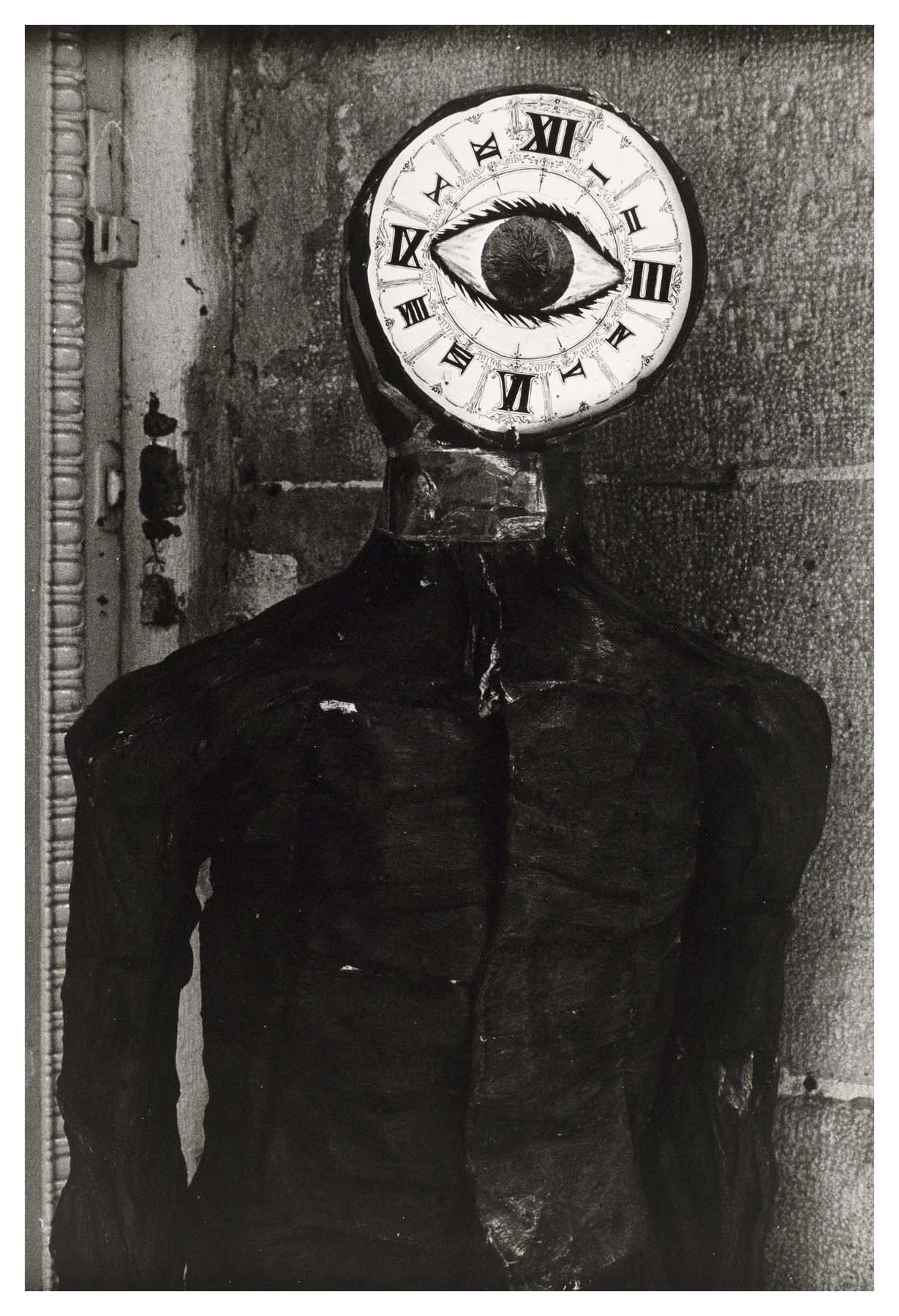
Clock Faced Man, Paris, 1972
Joel-Peter Witkin
JOEL-PETER WITKIN:
Joel-Peter Witkin was born in 1939, in Brooklyn, New York. Early in the artist’s life, he witnessed a gruesome car accident in which a little girl was decapitated. This traumatic event left an indelible mark on the artist’s psyche and would permeate all aspects of his creative vision and sensibility throughout his life.
Witkin made his first photograph when he was eleven. Edward Steichen selected one of Witkin’s photographs for the permanent collection of the Museum of Modern Art when Joel was sixteen years old. At twenty-one, Witkin enlisted as a Photographer in the U.S. Army, from 1961 to 1964. He holds a B.F.A. degree from the Cooper Union, in Sculpture. He was awarded a fellowship in writing at Columbia University. In 1975, Witkin moved to New Mexico. He holds a M.A. and a M.F.A. in Photography from the University of New Mexico.
Witkin creates elaborate tableaux that feature dwarves, hermaphrodites, people with unusual physical capabilities or deformities, mutilated corpses and amputated body parts from the dead, obtained from medical schools, insane asylums and morgues. The resulting photographs are simultaneously hauntingly beautiful and grotesque, as well as challenge established notions of beauty and normality.
Witkin has had over 150 solo museum and gallery exhibitions. Twenty-five monographs have been published on his work. He has received four National Endowments in Photography. He was made Chevalier of Arts and Letters of France in 1990. In 1996, Witkin was given a retrospective at the Guggenheim Museum in New York. In 2000, Witkin was made Commander of Arts and Letters of France. Most recently, in October 2022, he was part of a group exhibition titled, Les Choses, at the Louvre in Paris. Four documentary films have been made on his work. Witkin’s works are included in numerous public and private collections worldwide, including the Museum of Modern Art (MoMA), New York; the San Francisco Museum of Modern Art, California; the National Gallery of Art, Washington D.C.; Centre George Pompidou, Paris; Victoria and Albert Museum (V&A), London; Centro de Arte Reina Sofia, Madrid; Getty Museum, Los Angeles; Stedelijk Museum, Amsterdam; the Metropolitan Museum of Art in New York, among others. The artist currently lives in Albuquerque, New Mexico. joelpeterwitkin.com
ACKNOWLEDGEMENTS:
The project was realised thanks to the contribution of the Municipality of Ivano- Fracena and with the support of: Studio artOK-Palmanova, Studio Publigarda, La Cassa Rurale di Ponte Arche, METS S. Michele a. Adige, Sergio Poggianella Foundation.
“THE UNCANNY LENS” is twinned with the exhibition “COMUNICARE CON L’INVISIBILE /”COMMUNICATING WITH THE INVISIBLE / Tèchne, spirit, idea” presented at Palazzo delle Albere and METS in San Michele all’Adige (TN).
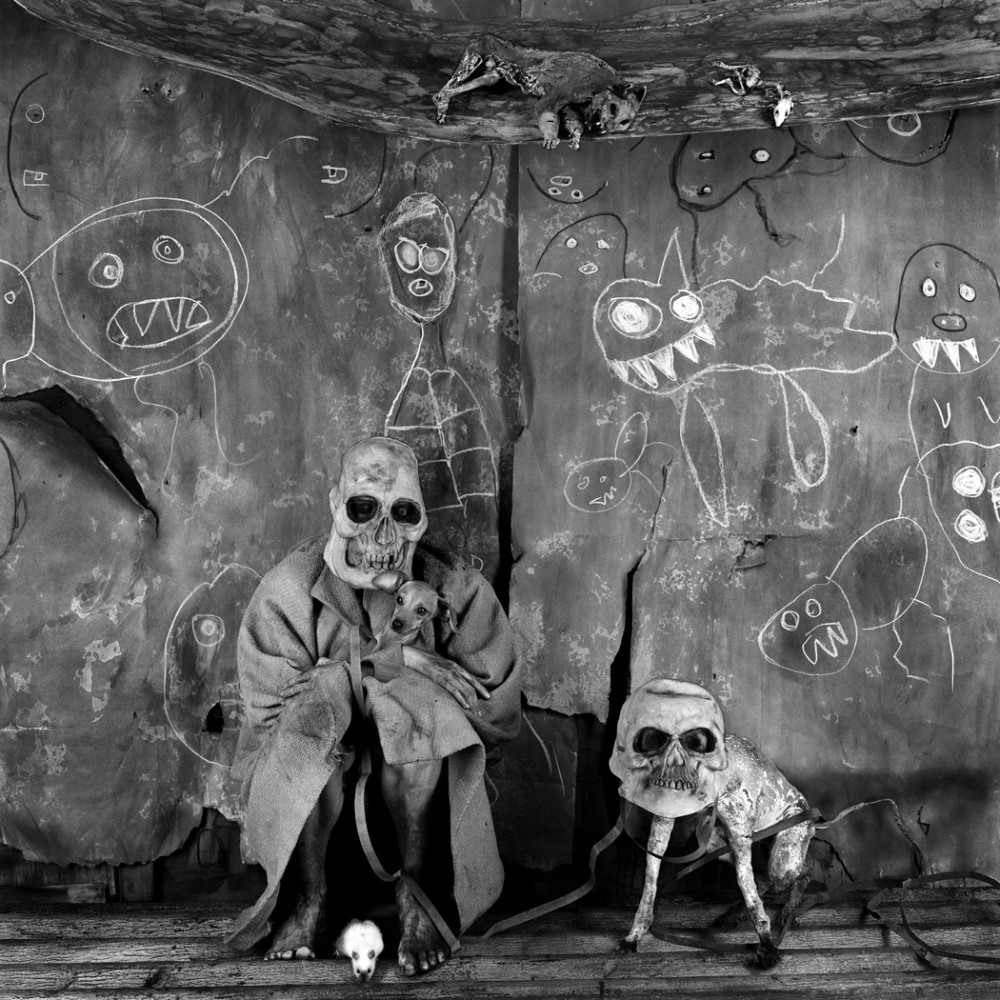 Underworld, 2013
Underworld, 2013
Roger Ballen
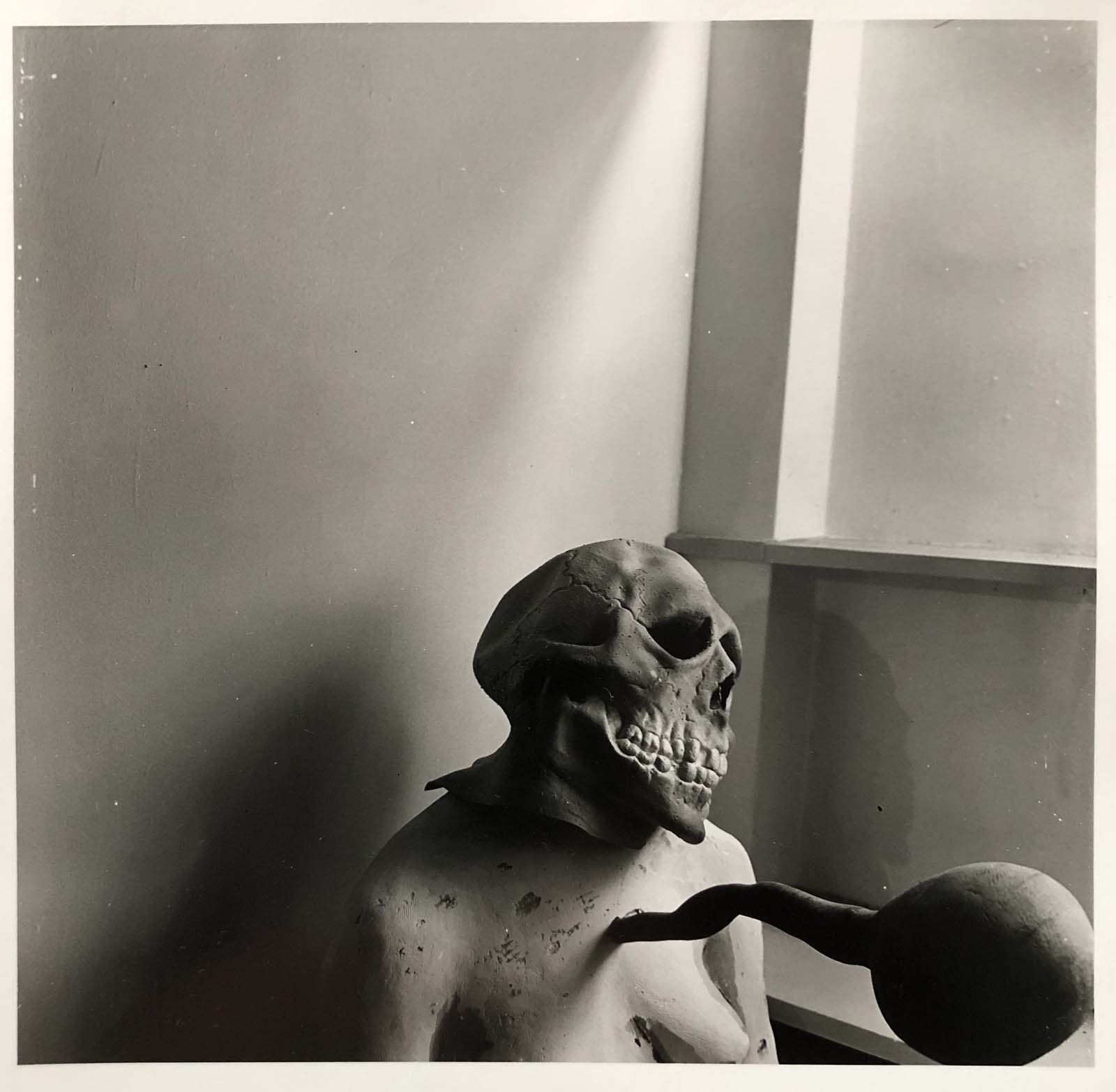 Modifications on a Sculpture, New York, 1967
Modifications on a Sculpture, New York, 1967
Joel-Peter Witkin
For any enquiries please email Paolo Dolzan at a_chirone@libero.it or Fulvio de Pellegrin at inmedia@gmx.de
Experimental Photography Workshop with Roger Ballen, by The Eyes in Progress Photography Centre, May 4, 2024, to May 6, 2024
Experimental Photography with Roger Ballen
Develop the ability to effectively express psychological identities
The Eyes in Progress Photography Training Centre is offering a 3-day workshop in Marseilles with the South African photographer Roger Ballen. Open to both professional and amateur photographers, this workshop will aim to develop a personal psychological identity through photography, as well as through other artistic media such as drawing, painting and sculpture.
The aim of the class is to enable participants to more effectively express their own psychological identities and better integrate the subjectivity that is involved in aesthetic photography.
Better understand the aesthetics of Roger Ballen’s photography and his artistic practice as well as an understanding of the business of art photography and what it entails.
From May 4, 2024, to May 6, 2024, Marseilles
For bookings contact https://www.eyesinprogress.com/en/workshops/workshop-experimental-photography-roger-ballen-2024-en
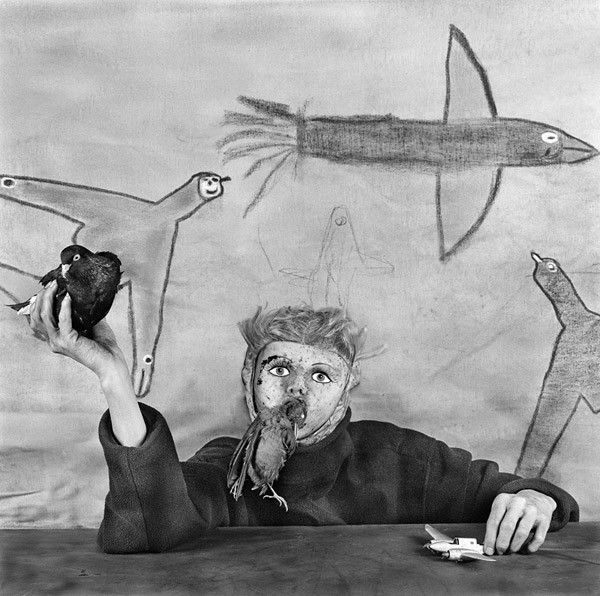
Take Off, 2012
Roger Ballen
| «It’s always a very crucial point when you look at art work, why that certain work stick in the mind and then last and why is a lot of it fleeting, and that’s an important thing for me in terms of being an artist, that stuff sticks in people mind, doesn’t get out of the mind and is turned over in the mind, and comes out and also it’s a way to actually extends the consciousness of the person which to me is the purpose of art at least for the viewer” Roger Ballen |
Drawing Now Art Fair, Les Douches Gallery presents Roger Ballen, Paris, France, 21 to 24 March
Les Douches la Galerie presents:
Roger Ballen
DRAWING NOW ART FAIR
BOOTH C14
CARREAU DU TEMPLE
4, RUE EUGÈNE SPULLER 75003 PARIS
21 to 24 March
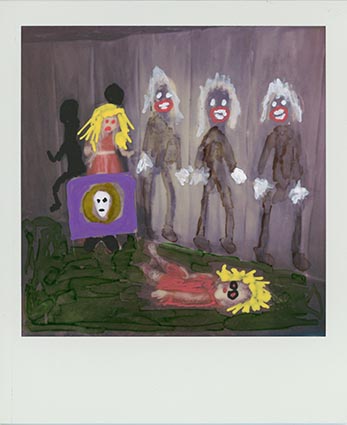
Roger Ballen – Drawing Polaroid
For its first participation in the Drawing Now Art Fair, which will be held in Paris from March 21 to 24, 2024, Les Douches la Galerie is pleased to present a solo show by Roger Ballen, a major artist of the contemporary scene, featuring around twenty redrawn and painted Polaroids, as well as a series of prints that will be shown for the first time in France. Originally from America and based in Johannesburg, South Africa, since the early 1980s, Roger Ballen explores marginality, strangeness, the relationship between humans and the animal world, and universal archetypes of the psyche. In enclosed universes, saturated with drawings, graffiti, but also suspended threads, where the wall is essential in the construction of the image, stories unfold that disrupt our gaze and explore the depths of the human condition. As mysterious as they are explicit, Roger Ballen’s works are intended to be revealing moments allowing the viewer to grasp what remains inexplicable. His photographic work, particularly his early series taken in South Africa, was the subject of an exhibition, Enigma, at Les Douches la Galerie in autumn 2023.
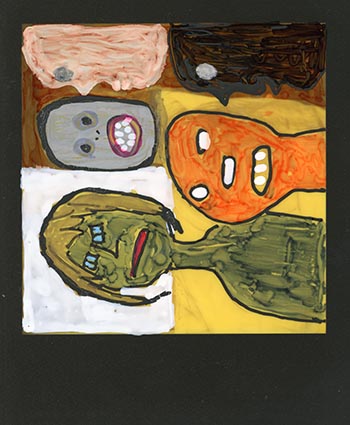
Roger Ballen – Drawing Polaroid
Roger Ballen – Drawing Now Art Fair INTERVIEW
Drawings have gradually appeared in your photographs, since two decades. Not only those already made by the people you photographed, but also your own drawings. What attracted you to this new personal artistic approach?
The concept of using drawing in my photographs evolved initially as a result of photographing subjects against walls in homes saturated with their lines, marks and drawings – in other words, from street photography, from ‘real life’. As time progressed, I began to interact with my subjects and sometimes asked them to make drawings on the wall. I then took photographs integrating what they produced with other aspects within the frame of the camera. The drawings may not have been on canvas, but they were still works of art of a kind – direct links to the people who made them. Eventually, I started to shoot more photographs of the drawings than of the people.
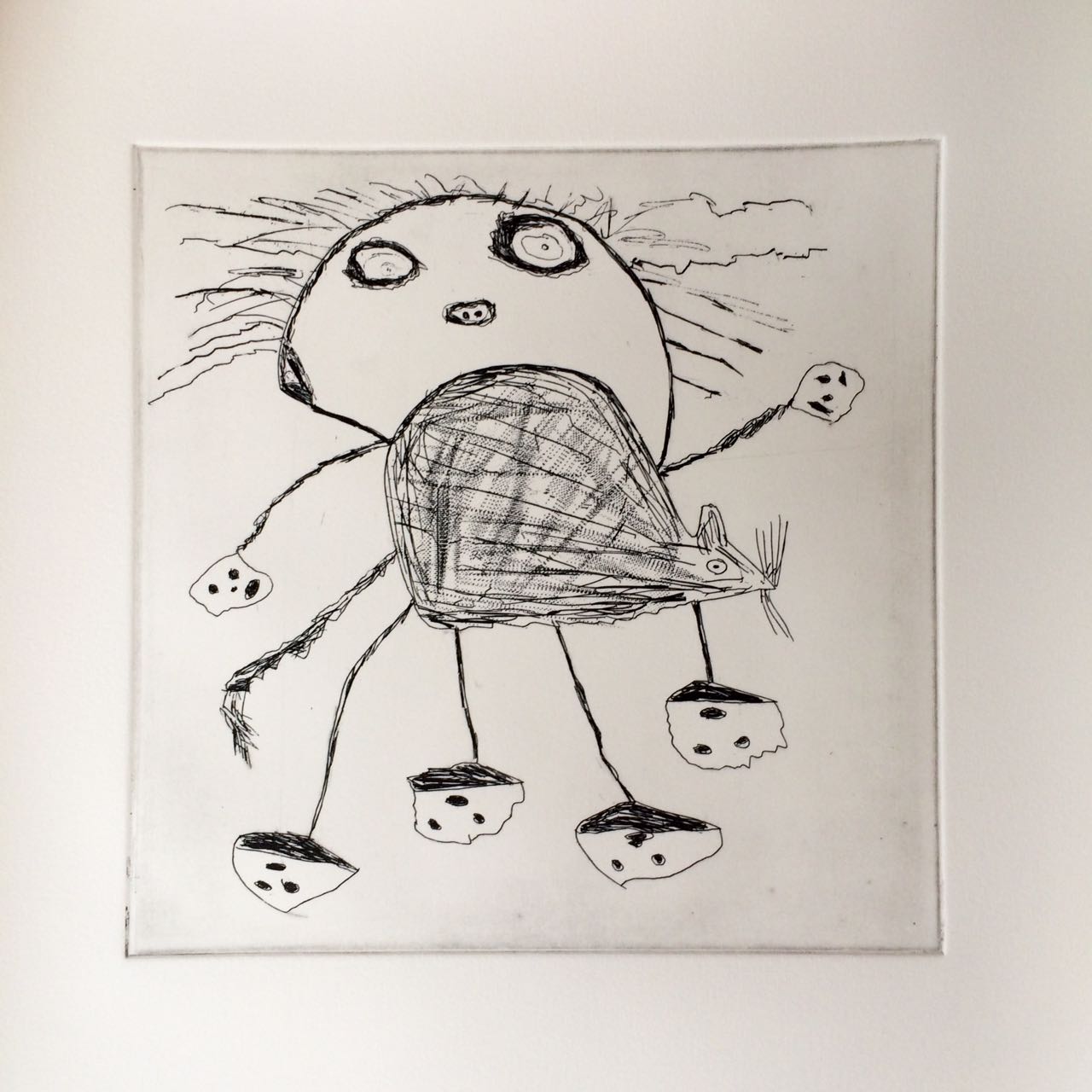
Roger Ballen Etching, Gobbled, 2018
What attracts you most to the very act of drawing? Another way of representing reality? Greater freedom to interact with a work of art?
I think drawing is a way of expressing what’s inside the mind through the hand. That definition doesn’t take into account all sorts of other things, however. Drawing sometimes can happen just by placing different objects or shapes in a strange fashion without any intention whatsoever. A drawing can be scribbles, it can be scratches, and it can be scrawls. Drawing can be a conscious activity or an unconscious one; it can be integrating scribbles, scratches, and scrawls on something linking them with something else. It’s complex. But my camera doesn’t draw. My camera is basically an instrument that reflects light from what’s there already. I have to figure out how to take the lines – the drawings, scribbles, scratches, and scrawls – and create a coherency from them. The drawings are usually in the background of my work, so the most challenging part of my hob, in some ways, is integrating the form and content of the drawing with the other aspects of the photographs, such as the animals, objects, and people. I think that is what makes my style unique in photography. A Roger Ballen photograph stands out as a Roger Ballen image. M fingerprint, my shadow, is quite identifiable.
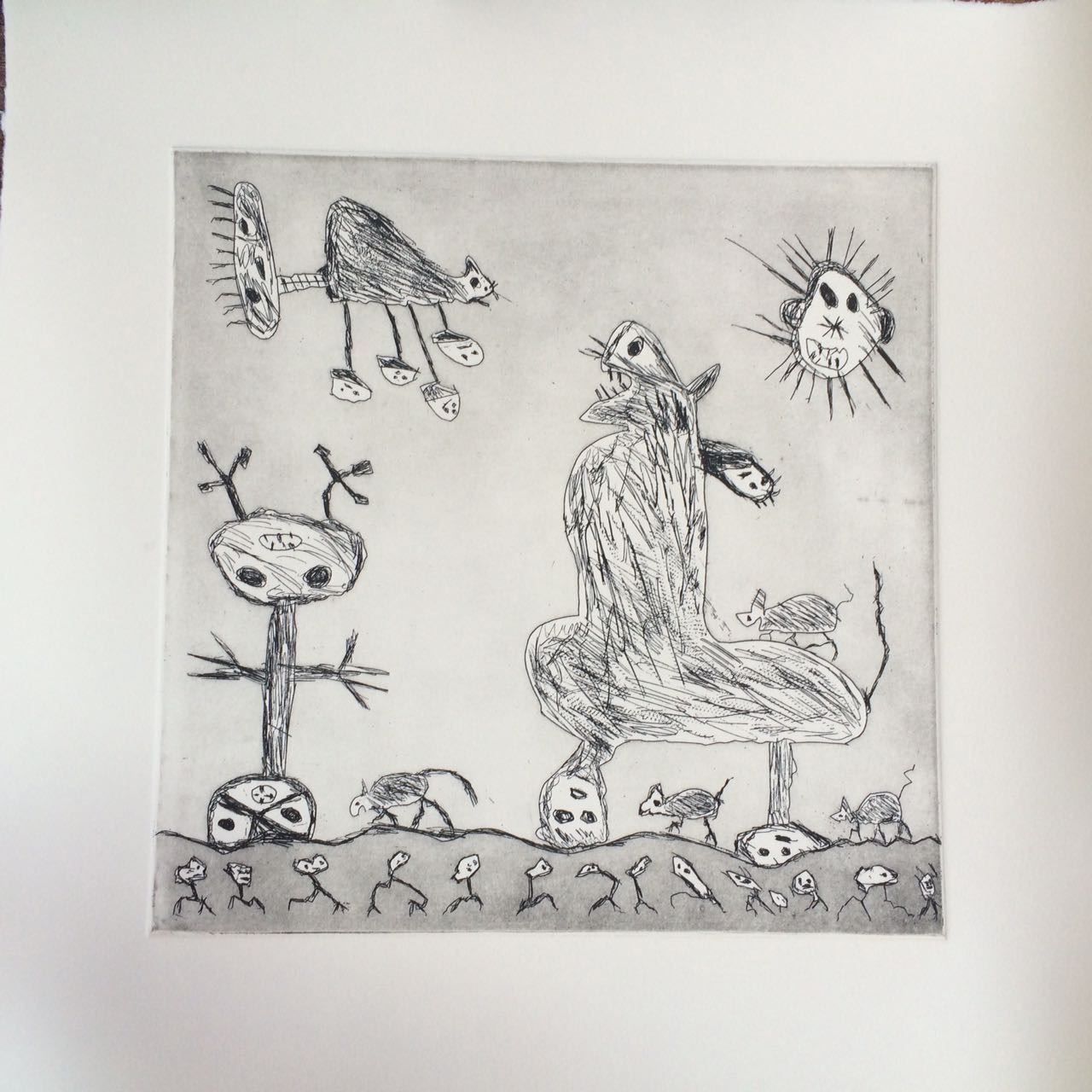
Roger Ballen Etching, Playtime, 2018
Does drawing allow you to go further in your artistic research, into the depths of the soul, the psyche, than photography, as you’ve practiced it until now, prevented you from reaching?
I think my intention is to create imagery that challenges the mind, that brings up imagery that people have either lost, forgotten about, or are scared of. I see my imagery as revealers, like reflections in the water that are somehow connected to shadows of the self. The pictures I draw for the photographs I take aren’t made for the viewer. They’re predominantly ways of connecting one part of me to the other.
Interview by Philippe Séclier
Introduction
My purpose in taking photographs over the past forty years has ultimately been about defining myself. It has been fundamentally a psychological and existential journey.
I often question whether the face I see in the mirror is mine, and where my thoughts come from. ‘Reality’ is a word that has no meaning to me; it is unfathomable. I would rather express the enigma behind this word than ponder its fundamental nature.
The compositions are very formal. They are simple; they are clear. But inside there is a theatre, a complexity that reflects the human condition in some way.
